Weekly round-up: 11 - 17 March 2015
Spring continued to happen this week where regular migrants were concerned, as numbers of the usual vandguard and keenly anticipated species began to pick up steam during a typically mixed bag of early spring weather – some of us will have enjoyed our first Sand Martin or Wheatear of the year in the past week - but for the most part it wasn’t t-shirt birding conditions just yet.
Generally though it was pretty peaceful where new birds were concerned, or at least where new rarities mattered. A goodly smattering of familiar faces stuck around a while longer (and when one takes a pace backwards and reads the roll-call, it’s pretty flipping impressive so we shouldn’t be getting all blasé about it) , but it was to Ireland and Cornwall and gulls that we had to look for our new rarity kicks this week.
The Met Office are hinting that the coming week will start with a big lump of high pressure anchored over the southwest. That might not lead to ideal viewing conditions for this coming Friday’s solar eclipse, but there’s a chance of some southerly winds in the first half of the week at least. But it’s the wrong end of the review to be speculating about what that might mean. So for now, we need to look at what’s gone before…
What’s got almost as many accepted records in Co.Cork alone than in the whole of Britain? Ah yes. That’d be American Herring Gull which, with 26 accepted records for the county to date, nips at the very heels of Britain’s 27 accepted birds. A juvenile found in the evening of 15th in Co.Cork on the Beara Peninsula at Black Ball Harbour will therefore, if accepted, take the county total up to a hugely impressive 27 and continues Ireland’s excellent record with rare gulls this winter.
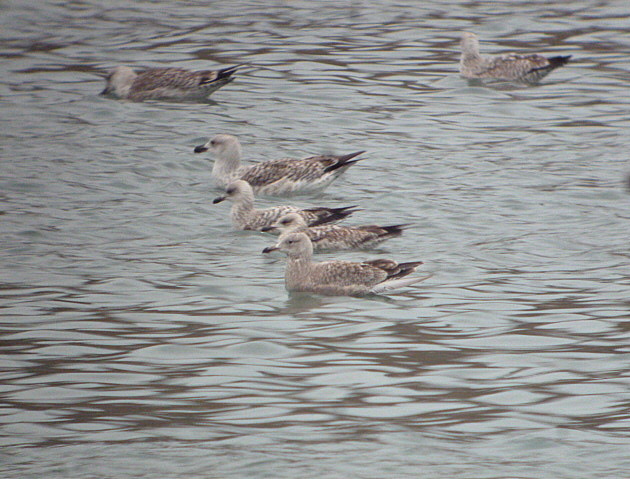
Ireland as a whole stands poised to tip over the 100 mark where records of smithsonianus is concerned. The distribution map for them paints a predictable enough picture for them, with a distinctively westerly bias to all records. That said, one can’t shake the feeling that the west coast of Scotland should be getting more records, and the south-west of England too. Is Ireland’s landmass just too much of a magnet for those birds that come east over the Atlantic? Another bird, a second-winter, was found in Cornwall in the late afternoon of 16th at Drift reservoir, reminding us that some at least do get through...
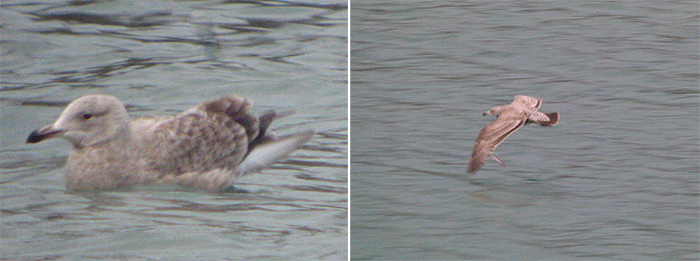
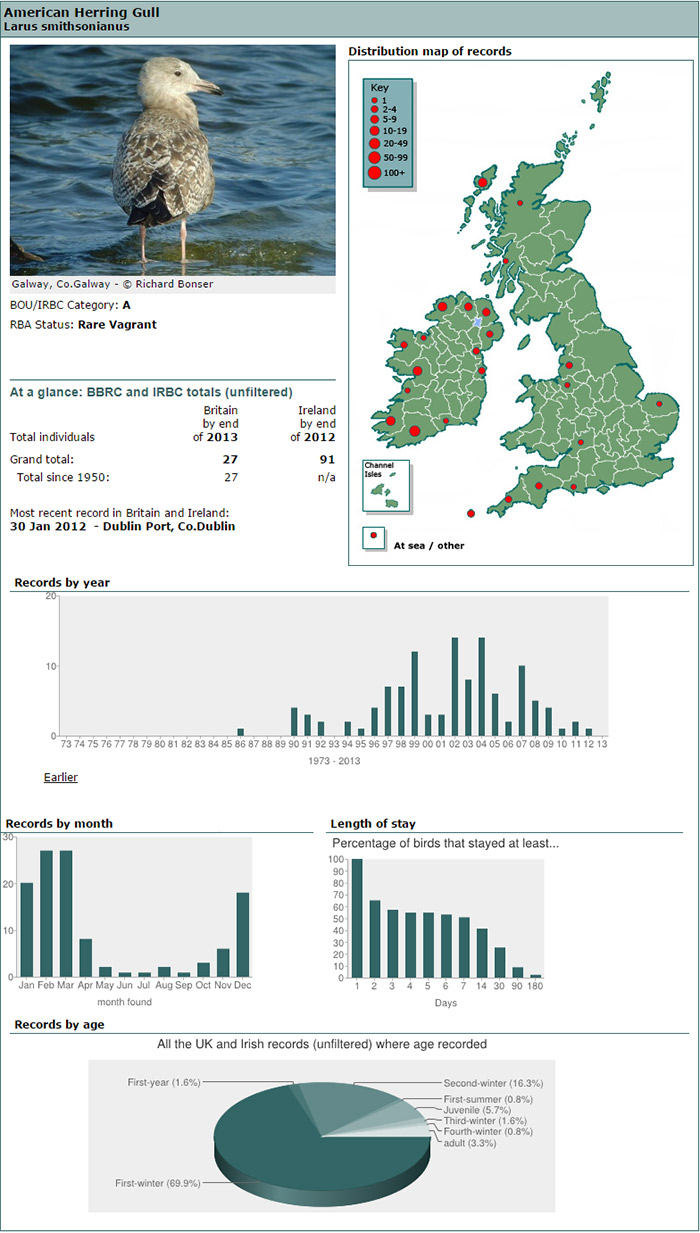
With both the male and female birds in Aberdeenshire and Highland respectively sitting tight all week, we continued to be spoilt where Harlequins were concerned. Quite how long either stays put is anyone’s guess – well, my Norfolk-based co-correspondent has already hazarded a guess for the drake – but for now the drake in particular continues to look happily settled on the River Don. It appears to have everything a displaced Harlequin could ask for – including a steady trickle of admirers. At this rate I may yet get to see it if I head to Aberdeen on oily business and get to enjoy the visual smack in the face only a male Harlequin can deliver.
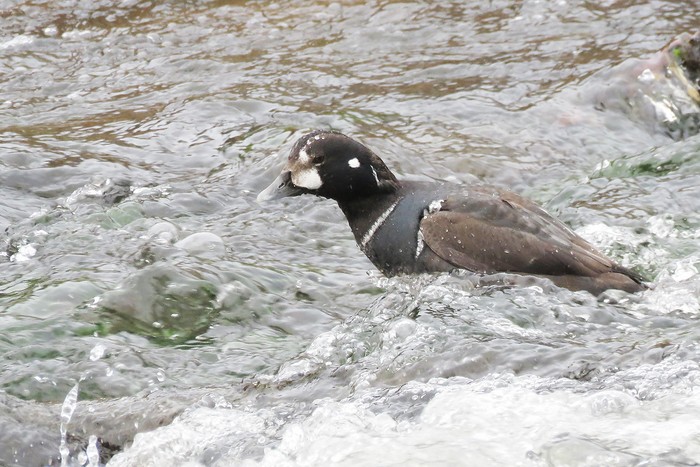
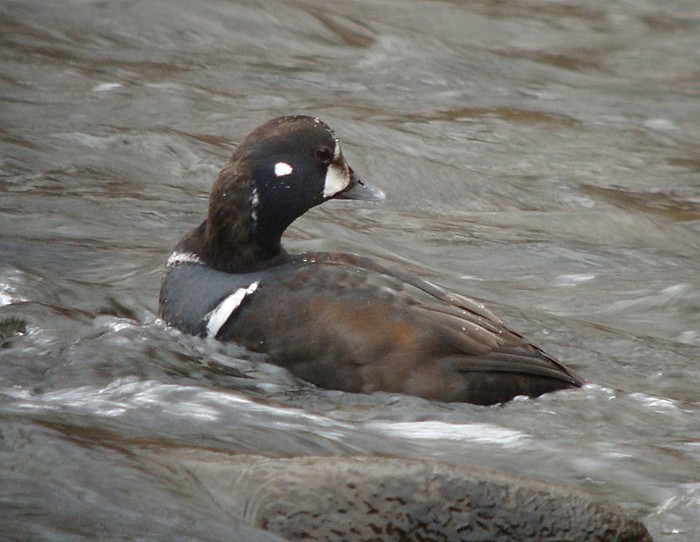
Another settled duck remained in Ireland’s Co.Kerry where the drake Black Scoter was still to be found this week off off Rossbeigh until 15th. Envious eyes continue to be cast north towards Iceland where recent mouth-watering photos of a drake White-winged Scoter near Keflavik tantalise and provide British and Irish birders with a clue as to what else could so easily occur off our coasts.
No news this week from Lough Gill (Co.Kerry) and the wintering American Coot there – thank goodness then for the other wintering individual at Balranald RSPB (Western Isles) which remained there still on 13th. Imagine, a week without American Coot… that just wouldn’t do at all.
Finally we end the quick rattle through the regular wintering rarities back down in Cornwall where the Pacific Diver off Penzanze is surely due to move on any day now. Maybe it already has… It was still there on 13th-14th, at least.
As we might expect, things are beginning to perk up where White-billed Divers are concerned, with three individuals logged this week in Scotland: two on 13th, one in the traditional site of Bluemull Sound (Shetland) and one off Portsoy (Aberdeenshire); and one on 14th offshore from Balranald RSPB, North Uist (Western Isles).
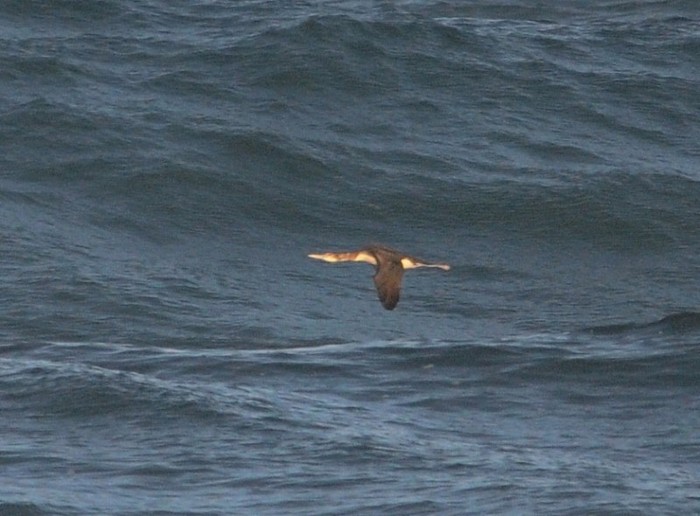
Just the one Little Auk was noted, off Lismore (Argyll) on 13th. Only slightly more to report with Pomarine Skuas, with two seen passing Hunmanby Gap (NorthYorkshire) on 12th.
A very familiar story continued to unfold at Denge Marsh (Kent)where the two settled Cattle Egrets remained for another week. Could the Dungeness area be about to add another rare breeding species to its tally? Time will tell.
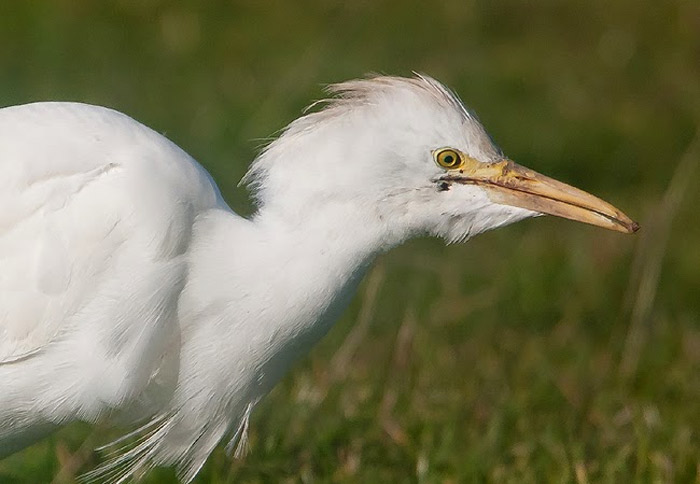
The Dungeness egret situation remained further enhanced with the continual presence of Great White Egrets in the area – peaking at three there on 14th. Elsewhere in the county single birds were noted at Conningbrook GP on 11th and Sandwich on 12th.
Taking our usual spin around the country, some 30 birds were noted from 16 counties. Settled groups at familiar sites included four at Ham Wall RSPB (Somerset) on 12th; two birds at Summer Leys NR (Northamptonshire) on 12-15th (with one still there on 16th); two birds at Ditchford GPs (Northamptonshire) on 17th; and three birds at Llangorse Lake (Powys) on 15th-17th. Other multiple sightings were two birds at Lakenheath Fen RSPB (Suffolk) on 15th-17th, and two over Westonzoyland (Somerset) on 15th.
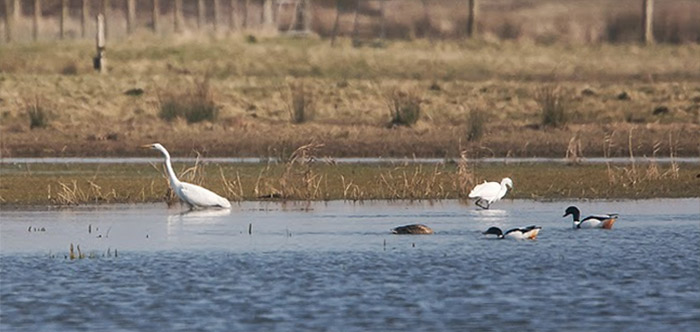
Single birds were noted on 12th at Aveley (Essex), Brogborough Lake (Bedfordshire), Frampton Marsh RSPB (Lincolnshire), Newark on Trent (Nottinghamshire) and Welney WWT (Norfolk); on 13th at Earlham (Norfolk), Hook (East Yorkshire) and Ogmore Reservoir (Glamorgan); on 14th at Queen Mother reservoir (Berkshire), King George VI reservoir and then Staines Moor (Surrey), and at Little Marlow GPs (Buckinghamshire); on 15th at Saltmarshe Delph (East Yorkshire); and on 17th at Welney WWT (Norfolk) and in Ireland at Skibbereen (Co.Cork).
Still quiet for Glossy Ibis this week (with the old days of standing on the Lampen Wall in Kent at dusk for your ibis now but a distant memory) – one remained at Gonalston (Nottinghamshire) on 11th-17th, and one was again in Essex at Bowers Marsh RSPB on 14th. One was reported from Hunton Bridge (Hertfordshire) on 16th, but wasn’t seen there subsequently.
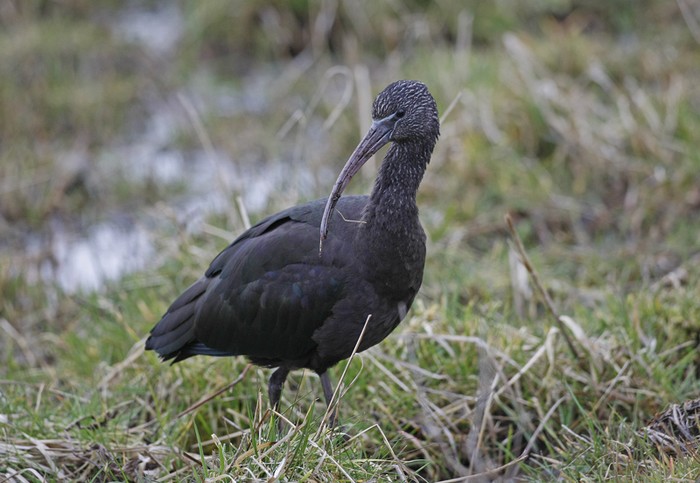
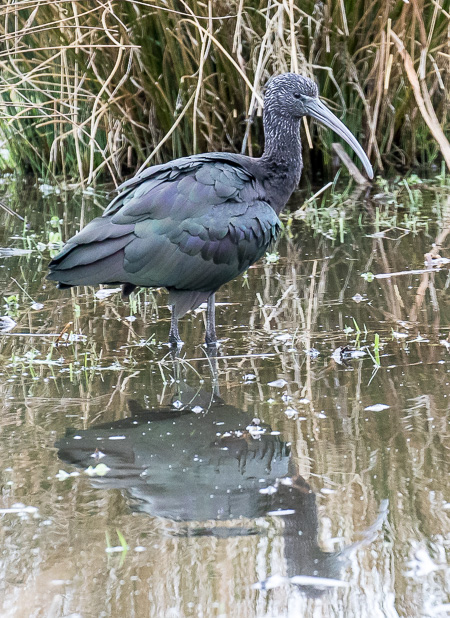
Another good showing of Spoonbills were to be had this week, once again predominantly across the south of England. As ever Dorset held the lion’s share, and Shipstal Point’s peak count reached 22 on the 12th. Two birds remained at Lodmoor RSPB on 11th-17th, and elsewhere in the county two were at Stanpit Marsh on 11th (with one there on 13th); one was in Brand’s Bay on 14th-16th; one was at Lytchett Bay on 11th still, with three there on 14th; and one was at Swineham Point on 15th.
Nearby Somerset hosted one at King’s Sedgemoor on 16th; while in Devon two birds roamed the Taw Estuary on 11th-14th; and on Scilly one was on Bryher on 17th. Moving back east, Hampshire retained a singleton at Titchfield Haven on 11th-16th, with one or two in the Normandy Marsh area on 12th-14th. Four birds were on Thorney Island (West Sussex) on 12th, one was at Church Norton on 14th, and at least one was at Medmerry RSPB on 11th-17th, with three birds there on 12th and two on 14th.
Two birds remained at Boyton & Hollesley Marshes RSPB (Suffolk) on 11th and two were at Minsmere still on 11th-12th; in Norfolk, two birds were reported from Holkham on 11th and past Salthouse on 13th. One was at Alkborough Flats (Lincolnshire) on 14th and one passed Blacktoft Sands on 17th.
One was in Scotland at Caerlaverock (Dumfries & Galloway) on 17th. In Ireland, one remained at Tramore (Co.Waterford) on 11th-16th, and one was noted at Greyabbey (Co.Down) on 14th-15th.
There were some nice early spring movements of Common Crane in the north of the country with a party of six birds noted heading south over Rutland Water (Leicestershire) mid-morning on 11th, and six heading north-east over Swillington Ings (West Yorkshire) at lunchtime that day. Presumably the same six were noted going south over North Cave Wetlands YWT (East Yorkshire) in the morning of 13th. On 14th two passed over Donna Nook (Lincolnshire) and one was over Frodsham (Cheshire). One passed over Spurn (East Yorkshire) on 15th, and one passed over Gibralter Point on 17th.
There was still plenty to go at amongst the honkers and the quackers this week, with all the contentious boxes duly ticked: possible escapes, possible hybrids, possible actual wild vagrants, myriad subspecies, you name it... all there.
With what might just be a record showing of subspecies, we’ll start proceedings amongst The Goose Formerly Known As Canada clan. On Islay, a Richardson’s Cackling Goose was at Loch Gruinart RSPB on 13th; a possible Todd’s Canada Goose was reported from East Chevington NWT (Northumberland) on 13th; the Lesser Canada Goose remained on the North Slob, Wexford Wildfowl Reserve (Co.Wexford) on 14th; and three Atlantic Canada Geese were reported from Roonah Lough (Co.Mayo) on 16th.
A small reduction in our tally of Black Brants saw some half dozen recorded. One remained in Hampshire at Gosport on 11th; the adult and first-winter birds remained at Kilnsea (East Yorkshire) on 12th, with one still at Spurn on 16th; and the adult was still at Trimley Marshes SWT (Suffolk) on 12th-17th. One was on Exminster Marshes (Devon) on 12th-14th, and one was in Suffolk at Loompit Lake on 16th.
A white Snow Goose was at Saltholme and Haverton Hole (Cleveland) on 13th-17th, hanging out variously with Canada Geese and Pink-feet. Hm. Meanwhile there was more white goose fun to be had in Scotland where a Ross’s Goose was to be found with Pink-feet in Forth at Tullibody on 11th-15th, having reportedly been there for around a week previously. It’s been a good winter for them this year...
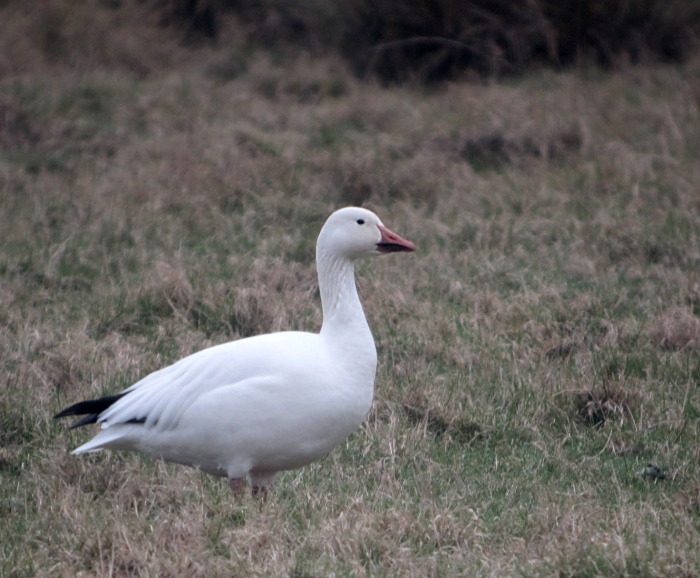
The familiar pair of widely scattered King Eider remained in Cornwall this week at Maenporth through to 17th and in Largo Bay off Ruddon’s Point (Fife) until 16th.
Also present off Ruddon’s Point this week was a Surf Scoter, one of six noted nationwide. The remaining birds were the first-winter drake in the Stour Estuary (Essex / Suffolk) on 11th-17th, a drake still off Musselburgh (Lothian) on 12th-17th, and in Ireland off Rosslare (Co.Wexford) still on 14th-17th, off Ben Head (Co.Meath) on 12th-15th, and Gleninagh Quay (Co.Clare) on 16th.
The drake Lesser Scaup remained in Glamorgan at Cosmeston Lakes on 12th-16th, with the first-winter drake still in Ayrshire at Martnaham Loch on 16th, and the drakes in Ireland on Lough Gara (Co.Sligo) again on 13th-14th and Parisee Lough on 17th again. In Cambridgeshire a possible female was at Cherry Hinton Chalk Pits on 12th-16th.
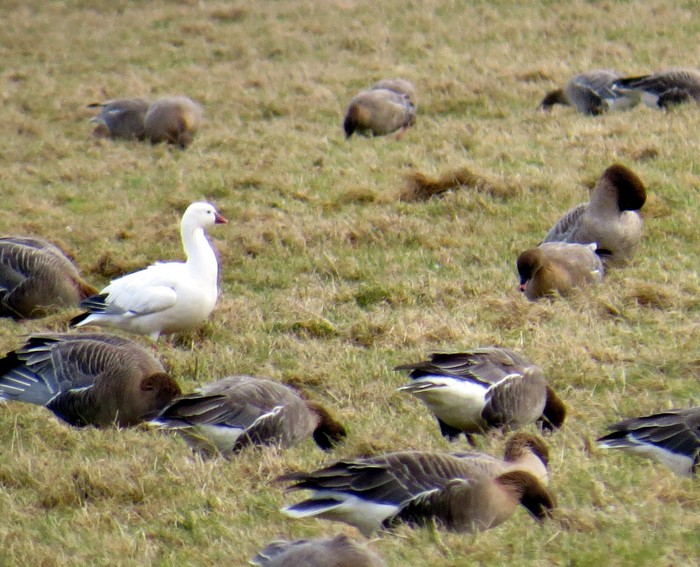
Eight Ring-necked Ducks were reported this week, starting with the two females still on Carlingwark Loch (Dumfries & Galloway) on 11th and 17th; the female remained in Northamptonshire at Billing GPs on 16th-17th. Drakes remained on Knockaderry Lake (Co.Waterford) on 11th; on Orkney at Loch of Skaill on 13th; at Wimbleball Lake (Somerset) on 14th-16th; and on Lough Shivnagh (Co.Donegal) on 15th. A further drake was on Ouse Washes RSPB (Cambridgeshire) on 16th.
Seven drake Green-winged Teals remained available, the bulk of them being in Scotland. Two were in Orkney, on North Ronaldsay still until 17th and at Loch of Tankarness on Mainland on 15th; one remained on North Uist at Loch Sandary (Western Isles) on 13th. On the Scottish mainland the regular was again at Caerlaverock ((Dumfries & Galloway) on 14th-16th. England claimed two birds, at Ashleworth Ham (Gloucestershire) still on 11th-17th, and in Cleveland at Dorman’s Pool on 12th-17th.
Four American Wigeons remained site-faithful, wit two English birds particularly accessible – birds remaining at Normanton (West Yorkshire) and Holme Pierrepont (Nottinghamshire) until 16th. One was still at Fairlie (Ayrshire) on 11th; and one was still at Tullaghan (Co.Leitrim) on 16th.
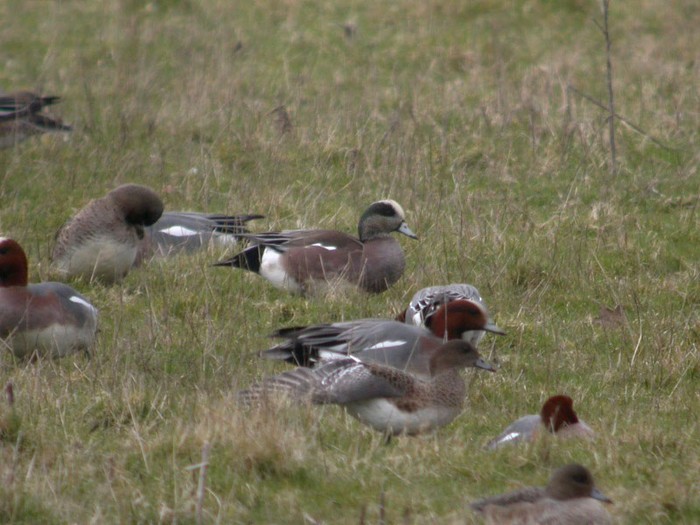
On Orkney the drake Blue-winged Teal remained on the Mainland, at The Shunan until 15th while a female duck in Dorset at Cowards Marsh provided some initial head-scratching on 12th-15th: was this a female Blue-winged Teal, a female Cinnamon Teal, or a hybrid? It finally sounded as if a female Shoveler hybrid was the most probable diagnosis. Less contentious, but every bit as likely to indulge in some extra-species jigginess in the coming weeks judging by the species’ track record in this regard, was the drake Black Duck still on Tresco (Scilly) on 15th.
Thank you, the wintering Lesser Yellowlegs in East Sussex, seen at Rye Harbour on 11th. Were it not for you, and your counterpart on Co.Dublin’s Rogerstown Estuary on 17th, we’d have absolutely nothing to report amongst the Shorebird section this week...
There’ll soon be loadsa Dotterels, rest assured...
On the Wirral, the popular first-winter Laughing Gull remained available all week long; while at Ballycotton the second-winter bird remained in County Cork until 14th.
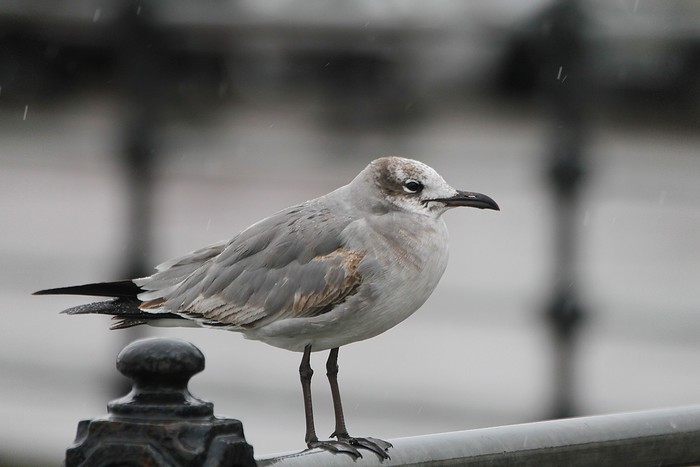
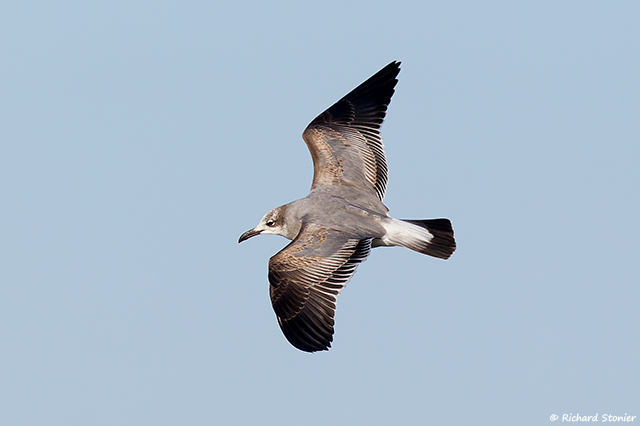
Three Bonaparte’s Gulls were recorded this week – the regular adult bird still lobbing around Cardiff Bay (Glamorgan) on 14th, a first-winter in Ireland at Tramore (Co.Waterford) on 15th-17th, and a first-winter again in Dorset at Radipole Lake RSPB on 17th.
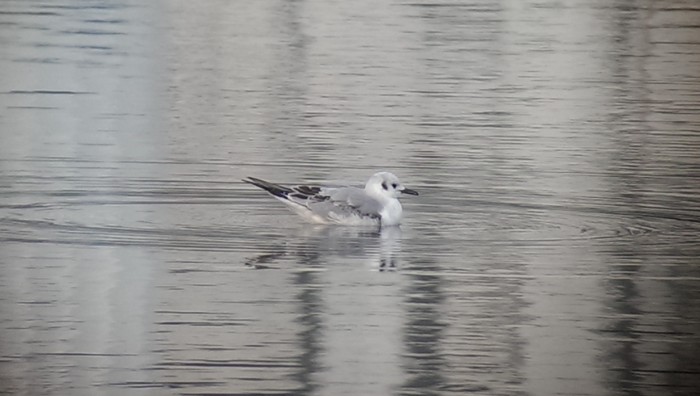
While most of this week’s 27 reports of Ring-billed Gulls were in Ireland, we’ll start in Cornwall where there was plenty of shuffling of the pack going on over the course of the past seven days. Hayle Estuary retained an adult on 11-14th, a first-winter on 15th-16th, and an adult again on 17th; a first-winter remained at Swanpool on 13th-17th; a first-winter was at Marazion on 16th; and not a million miles away on Scilly the adult was seen again on St.Mary’s on 14th-15th.
Elsewhere in England, the Gosport adult remained in Hampshire on 11th-17th. A second-winter bird was reported from Paxton Pits NR (Cambridgeshire) on 14th. Meanwhile up in Scotland the adult remained at Townhill CP (Fife) on 11th-17th, and in Wales an adult was again at Llys-y-fran reservoir (Pembrokeshire) on 11th.
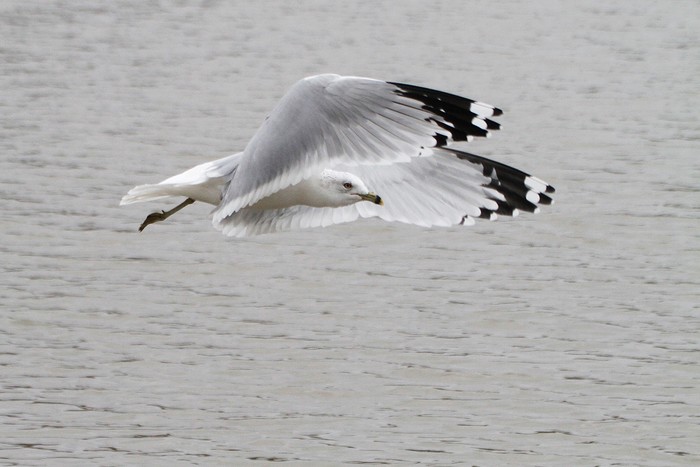
And all the rest were in Ireland... Trios were at Sandymount (Co.Dublin) on 13th (with two there the following day), and at Nimmo’s Pier (Co.Galway) on 15th; duos were in Cork City (Co.Cork) on 13th, and in Galway (Co.Galway) on 15th. Single birds were noted at Blacksod (Co.Mayo) on 11th again; Wexford town (Co.Wexford) on 13th still; at Carrickfergus (Co.Antrim) on 13th-15th still; at Bray (Co.Wicklow) on 15thagain ; at Castletown Bearhaven (Co.Cork) and Lurgan (Co.Armagh) also on 15th; at Lough Leane (Co.Kerry) on 16th still; and at Tramore (Co.Waterford) on 16th again.
White-winged gull numbers were a mixed bag - Glaucous Gulls tallied some 40 birds from the usual northern and western stations as far south and east as Kent still. Most involved singletons, but a few duos were noted and trios were on North Ronsaldsay (Orkney) on 15th and at Killybegs (Co.Donegal) on 16th.
Numbers of Iceland Gulls however remained much higher than those of their chunkier counterparts, with at least 160 birds recorded in the course of the week, with a predominance in the north-west of Scotland and in Ireland, but birds recorded pretty much everywhere else besides. Notable double figure counts came once again from the Butt of Lewis coastal area (Western Isles) where a peak count of 20 was noted on 14th; Malin Head (Co.Donegal) with 12 birds on 13th; and Stornoway Harbour on Lewis (Western Isles) with 23 birds on 13th.
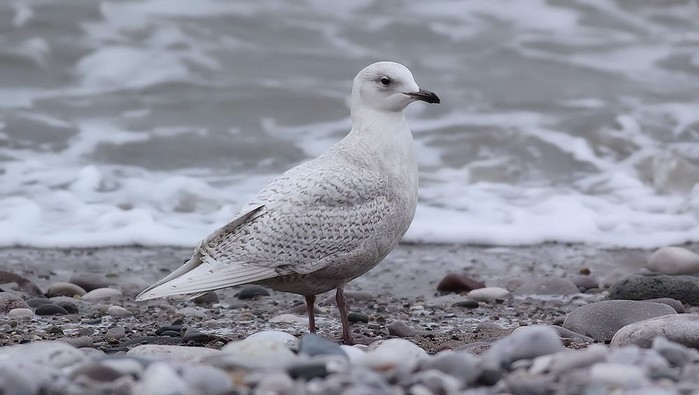
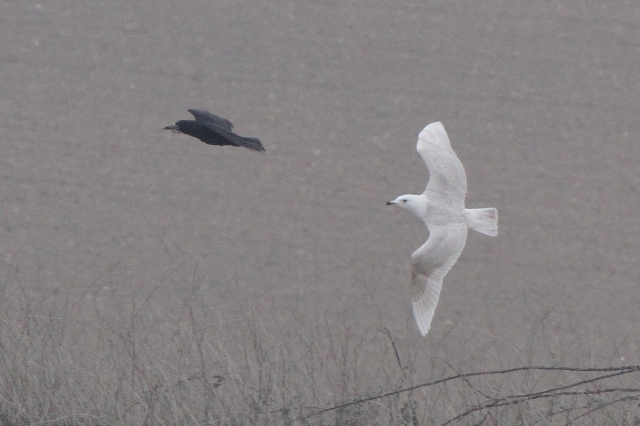
There was a good showing of Kumlien’s Gulls, with seven individuals noted this week – a juvenile at Malin Head (Co.Donegal) on 11th-13th; a third-winter at Cotswold Water Park (Gloucestershire) on 12th-15th; a second-winter on the Hayle Estuary (Cornwall) on 13th; a juvenile at Lurgan (Co.Armagh) still on 13th-17th; a juvenile at Richmond Bank (Cheshire) on 14th; a third-winter at Smerclate on South Uist (Western Isles) on 14th-15th; and a juvenile still at Ormsary (Argyll) on 16th.
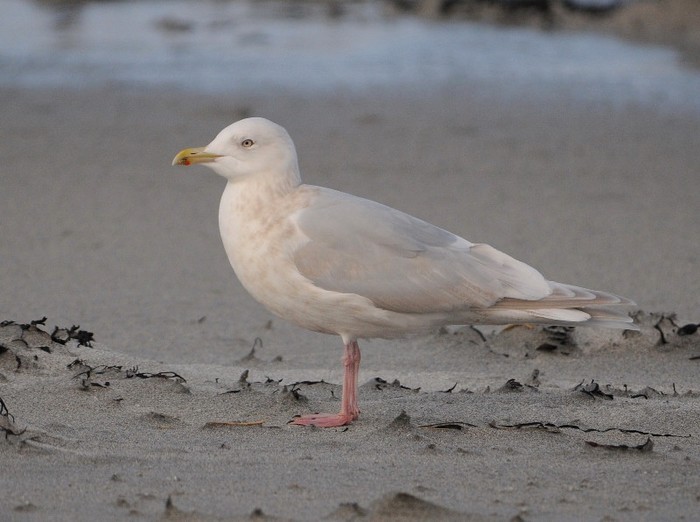
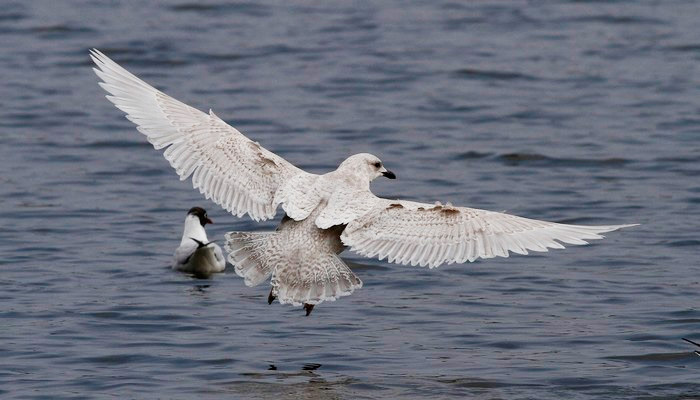
We end our Gulls & Terns with a lonely tern - in Co.Galway, the wandering adult Forster’s Tern pitched down again on Mutton Island on 15th.
A possible grey morph Gyrfalcon was seen on Orkney at The Shunan on 15th. More concrete (much, much more concrete) was the second-winter White-tailed Eagle tracked around East Anglia on 14th-16th: first seen at North Fambridge (Essex) on 14th, it was sighted again at Wivenhoe that day and then in the morning of 15th over Chelmsford and Rayne. By mid morning of 15th it was over Mickle Mere (Suffolk), and by the afternoon it had moved up into Norfolk – seen over North Pickenham, Swaffham and Warham Greens. Starting the day at Cley on 16th, it checked in at various points along the north Norfolk coast through the morning, but wasn’t seen in the county thereafter. A good county tick (even a house tick, I am guessing) for some... And then on 17th presumably the same bird was a-wandering in Suffolk again, reported from Woodbridge, over Homersfield GPs, and Bungay. Presumably much to the chagrin of the local farmers who so vehemently opposed the idea of a reintroduction.
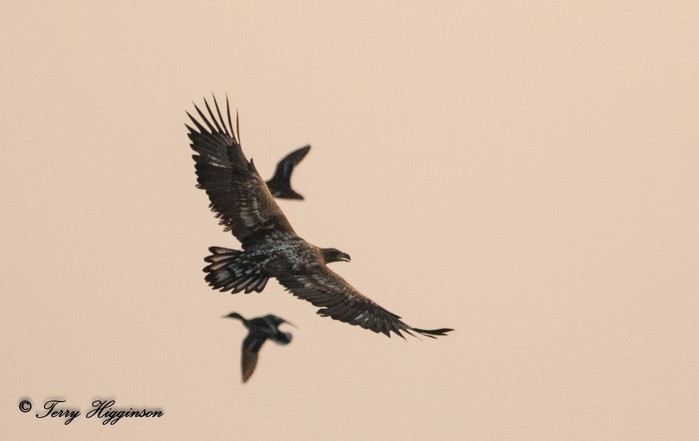
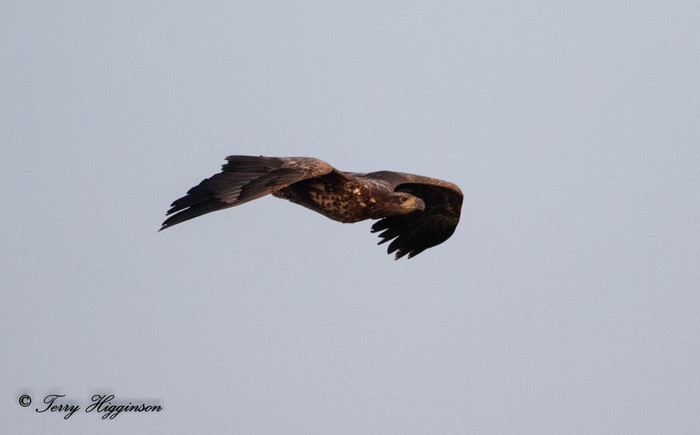
Norfolk was still the epicentre of the wintering Rough-legged Buzzard scene – with regular reports all week from Burnham Overy, Halvergate Marshes, Breydon Water and Holkham. One was also seen passing over Titchwell on 12th. Elsewhere, individuals were still at Wallasea Island (Essex) on 13th, Holme Fen NNR (Cambridgeshire) on 14th, and in the Buckton (East Yorkshire) area on 14th-15th. A further bird was noted in Lincolnshire at Frampton on 13th.
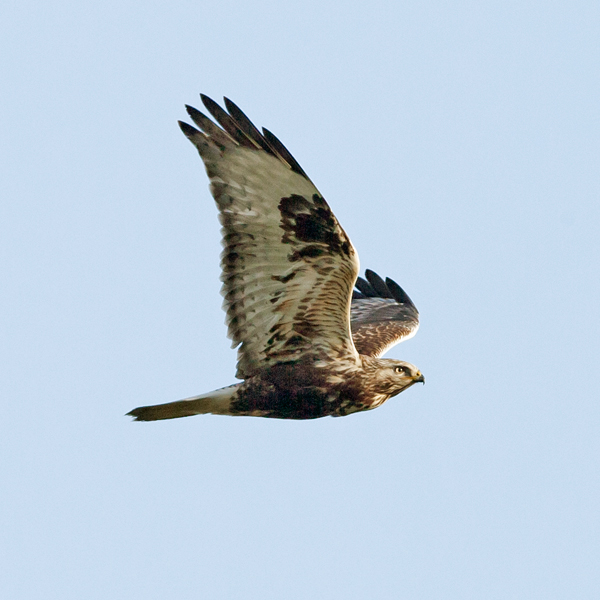
Alas this week’s contender for Passerine of the Week, a Short-toed Lark reported from Adwick Washlands RSPB (South Yorkshire) turned out not to be the homunculus of the lark world but instead just a Skylark. There’s plenty of time yet…
Last week’s new Yellow-browed Warbler remained in Worcestershire all week at the Sedgeberrow sewage works – and if any confirmation were needed that sewage works and Yellow-browed Warblers go together like bangers and mash or Jose Mourinho and immodesty, the week’s second individual was in Devon at Branscombe sewage works on 14th-17th. The third individual logged this week was the bird beside the Plym Estuary (Devon also) on 17th still.
Both of the seemingly resident Penduline Tits remained at Darts Farm RSPB (Devon) until 17th. Meanwhile one was seen in Dyrham (Gloucestershire) on 11th.
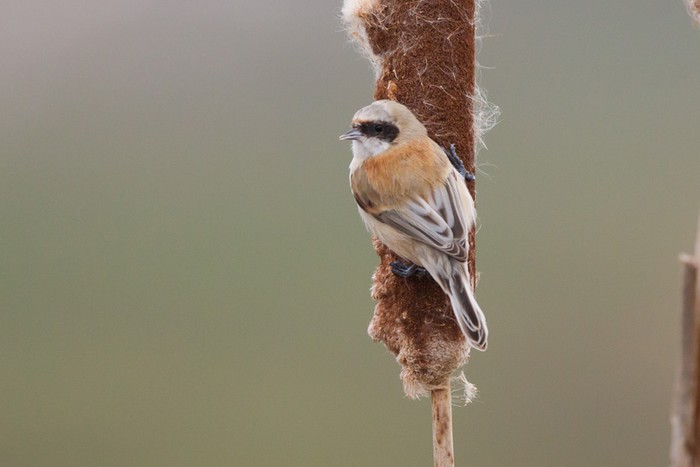
The photogenic Black-bellied Dipper remained at Harpham (East Yorkshire) until 14th while the Voe (Shetland) bird was seen once again there on 13th.
One of the two Richard’s Pipits seen lately in Norfolk at Breydon Water RSPB was noted there again on 11th-13th. The Cumbrian bird remained at Parton until 15th, while in East Sussex one was seen at Newhaven on 12th-17th.
In Essex the two male Serins remained in Gunners Park, Shoeburyness all week long.
Numbers of Little Buntings rose once again this week with a news of a new bird emerging from west Cornwall on 15th – a bird present in a private area of Nanjizal, and apparently there since 5th at least. Meanwhile the other two stalwarts remained elsewhere in the county at at Gulval, near Marazion until 17th and at Forest Farm, near Cardiff (Glamorgan) until 17th..
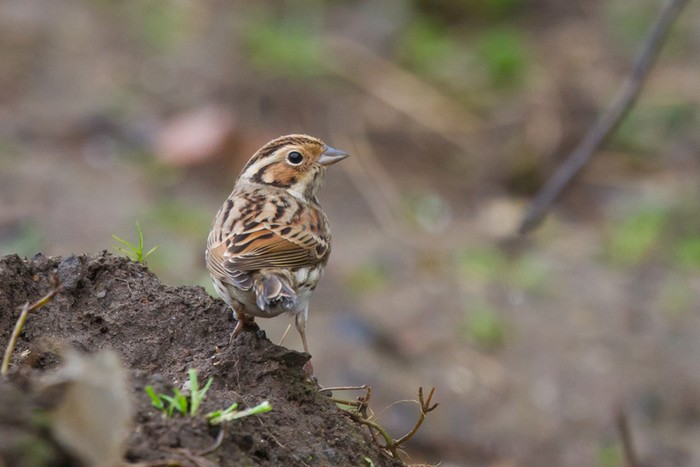
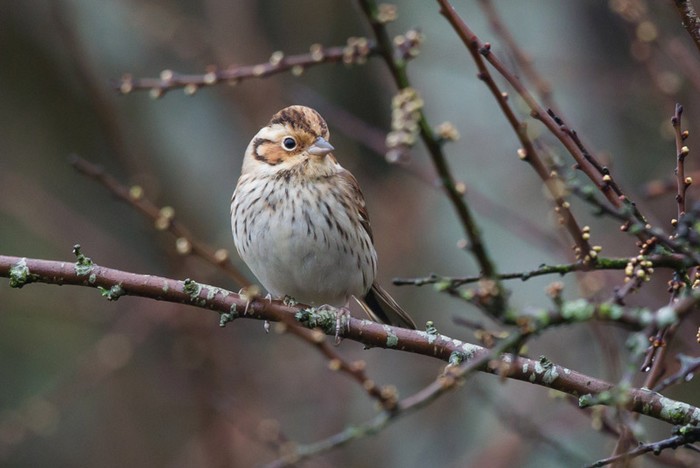
Waxwings had a slightly better showing this week than of late, with one record finally deserving to be described as a flock – 14 birds at Cults (Aberdeenshire) on 14th had risen to 31 birds there on 15th, and 21 still there on 17th. Elsewhere parties of four individuals remained into the new week at Acomb (North Yorkshire) and Darlington (Co.Durham), both parties staying put for most of the period. Other multiples were a dozen that passed through Big Waters NR (Northumberland) on 11th; seven logged in Sunderland (Co.Durham) on 12th; and four in Norwich (Norfolk) on 13th.
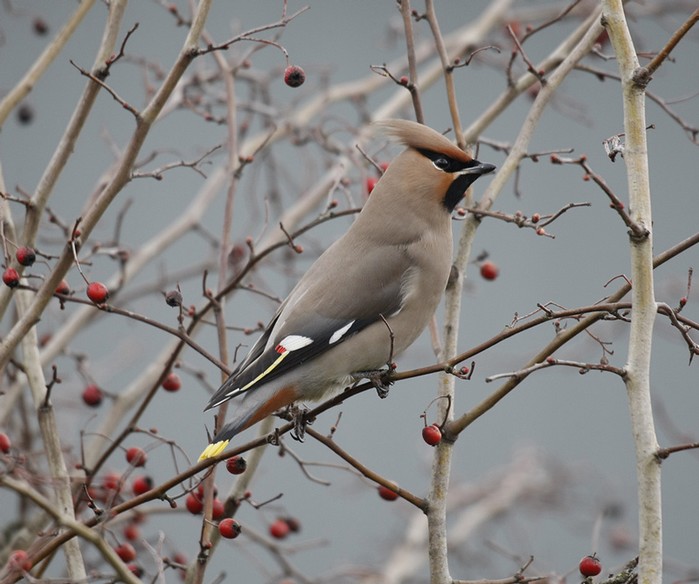
And so to our traditional end-of-the-winter end-of-the-week... It was all kicking off in Wales this week where Great Grey Shrikes were concerned, with roughly a quarter of the week’s overall tally coming from there. The regular bird was again at World’s End (Clwyd) on 14th; on 12th, birds were reported from Dyfnant Forest (Powys) and Penllyn Forest (Gwynydd); one was in Glamorgan at Hirwaun on 14th; and another was in Brechfa Forest (Carmarthen) on 15th.
Away from Wales, many wintering birds remained on territory a while yet. News was a little sparse from the south-west with one still at Bransbury Common (Hampshire) on 13th and Milkham Inclosure on 17th. Heading east, East Sussex accounted for records from High and Over still on 11th-17th and Seven Sisters CP on 13th-14th. The regular bird was at Thursley Common (Surrey) on 12th-17th; in Berkshire one was at Cow Down on 14th-17th; while in Kent the settled bird remained in Chilham on 11th-17th.
Suffolk held onto the bird at Upper Hollesley Common until 17th; in Norfolk the Roydon Common individual was still present on 13th-15th; the Santon Downham bird remained straddling the county line on 17th.
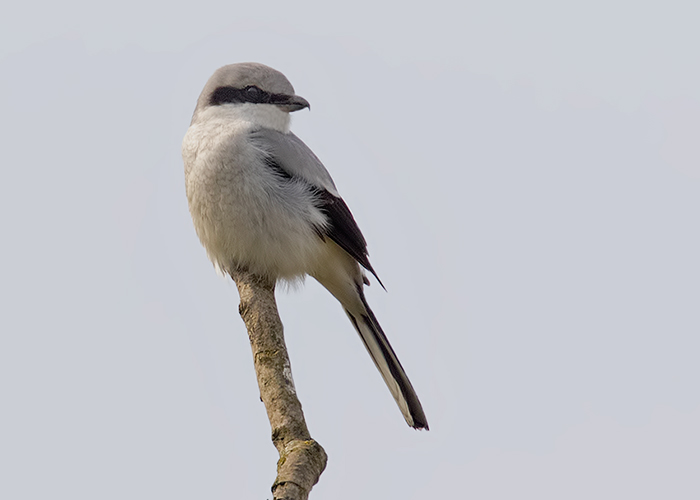
The north of England remained popular with the species, Yorkshire continuing to account for several records including the week’s only multiple showing – two birds briefly at Midhope Moor (South Yorkshire) on 14th, with one still there on 17th and one at Hatfield Moors on 14th. One remained at Heslington (North Yorkshire) on 11th-13th. In Derbyshire one was still at Beeley Moor on 13th-17th; in Lancashire one remained, singing, on Grindleton Fell on 11th, and still there at week’s end. One remained in Cumbria at Dalton Crags on 17th. Finally, crossing the border into Scotland one was present at Loch Mahaick (Forth) on 14th-15th; while a probable was reported on 17th from Highland near Dalwhinnie.
And that was the week that was. What then of the coming days? We’re getting into the time of year when you can dare to dream of something good to tickle your fancy.
With every day that passes the possibilities get better and better from here on in, while still retaining the possibility of a late traditional winter rarity too. It’s that transition time when, statistically speaking, you’re only a little more likely to bump into a Snowy Owl than a Scops Owl. What a nice problem to have.
(I meanwhile have mustered nothing better on the feather front than a migrant Collared Dove here on Whalsay. Chin up, fella. One beige pigeon does not a spring migration make…)
With a glance to the rarities of years past we’ll keep our eyes firmly fixed however on the more spring-like possibilities. There’s a plethora of colourful southern goodies that stand out as possibilities in the third week of March – take your pick from Little Bittern, Black-winged Stilt or (for the third week of predictions running) Great Spotted Cuckoo. All good spring fodder, and all provide me with plenty of rope with which to hang myself in the prediction stakes…
Statistically the stand-out overshoot is Alpine Swift, with 21 records from past years in the coming week. But we’ve already had one of them lately... And with the winds looking largely westerly for the coming days, and with a few Little Buntings having been turned up in recent weeks – news of the most recent record emerging from Cornwall this week – I’m going to look to another bunting that’s always a pleasing spring find and could pop out of the woodwork on someone’s local beat...
Fingers crossed then that some local patch flogger gets lucky with a cracking Rustic Bunting this coming week. There’ve been five records of this smart species this week since 1992, but none since 1999. Maybe we’re due another shortly. That or an American Herring Gull somewhere in Britain…
Jon Dunn
18 Mar 2015






